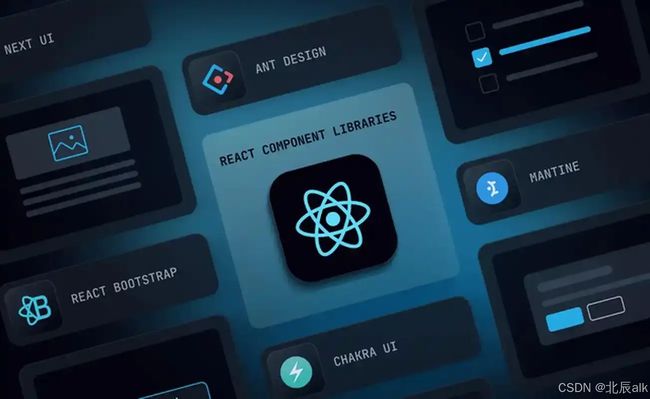React 开发全面指南:核心 API、方法函数及属性详解
React 作为当前最流行的前端框架之一,凭借其组件化、声明式编程和高效的虚拟 DOM 机制,成为构建复杂用户界面的首选工具。本文将深入解析 React 的核心 API、方法函数及属性,覆盖从基础到高级的各个方面,助你全面掌握 React 开发技巧。
文章目录
-
- 1. React 核心概念
-
- 1.1 组件化开发
- 1.2 JSX 语法
- 1.3 虚拟 DOM
- 2. 组件生命周期方法(类组件)
-
- 2.1 挂载阶段(Mounting)
- 2.2 更新阶段(Updating)
- 2.3 卸载阶段(Unmounting)
- 2.4 错误处理
- 3. Hooks API 详解
-
- 3.1 基础 Hooks
- 3.2 高级 Hooks
- 3.3 自定义 Hook
- 4. Context API 与状态管理
-
- 4.1 创建 Context
- 4.2 提供 Context 值
- 4.3 消费 Context
- 5. Refs 与 DOM 操作
-
- 5.1 创建 Refs
- 5.2 访问 Refs
- 5.3 转发 Refs(Forwarding Refs)
- 6. 事件处理与合成事件
-
- 6.1 事件绑定
- 6.2 合成事件(SyntheticEvent)
- 6.3 事件池(Event Pooling)
- 7. 高阶组件(HOC)与 Render Props
-
- 7.1 高阶组件
- 7.2 Render Props
- 8. 性能优化 API
-
- 8.1 `React.memo()`
- 8.2 `useMemo` 与 `useCallback`
- 8.3 `PureComponent`
- 9. 错误边界与调试工具
-
- 9.1 错误边界组件
- 9.2 React Developer Tools
- 10. React Router 核心 API
-
- 10.1 路由配置
- 10.2 导航
- 11. 服务端渲染与 ReactDOMServer
-
- 11.1 `renderToString()`
- 11.2 `renderToStaticMarkup()`
- 12. TypeScript 与 React 集成
-
- 12.1 组件 Props 类型
- 13. 常见问题与最佳实践
-
- 13.1 避免不必要的渲染
- 13.2 状态管理选择
- 13.3 代码分割
- 结语
1. React 核心概念
1.1 组件化开发
React 应用由组件构成,分为函数组件和类组件:
- 函数组件:通过纯函数定义,无状态(Hooks 出现后可通过 useState 管理状态)。
- 类组件:继承
React.Component,具有生命周期方法和状态管理。
// 函数组件
function Welcome(props) {
return Hello, {props.name}
;
}
// 类组件
class Welcome extends React.Component {
render() {
return Hello, {this.props.name}
;
}
}
1.2 JSX 语法
JSX 是 JavaScript 的语法扩展,用于描述 UI 结构:
const element = Hello React;
- 表达式嵌入:使用
{}包裹 JavaScript 表达式。 - 属性命名:采用驼峰式(如
className代替class)。
1.3 虚拟 DOM
React 通过虚拟 DOM 实现高效更新:
- 每次状态变更生成新的虚拟 DOM 树。
- 通过 Diff 算法对比新旧树差异。
- 仅更新实际 DOM 中变化的部分。
2. 组件生命周期方法(类组件)
2.1 挂载阶段(Mounting)
constructor(props):初始化状态和绑定方法。static getDerivedStateFromProps(props, state):根据 props 更新 state。render():返回 JSX,必须为纯函数。componentDidMount():组件挂载后执行,适合发起网络请求。
2.2 更新阶段(Updating)
shouldComponentUpdate(nextProps, nextState):决定是否重新渲染。getSnapshotBeforeUpdate(prevProps, prevState):捕获 DOM 更新前的状态。componentDidUpdate(prevProps, prevState, snapshot):更新完成后执行。
2.3 卸载阶段(Unmounting)
componentWillUnmount():清理定时器、取消订阅等。
2.4 错误处理
static getDerivedStateFromError(error):更新状态以显示错误 UI。componentDidCatch(error, info):记录错误信息。
3. Hooks API 详解
3.1 基础 Hooks
useState(initialState):管理组件状态。const [count, setCount] = useState(0);useEffect(effect, dependencies):处理副作用(数据获取、订阅等)。useEffect(() => { document.title = `Count: ${count}`; }, [count]); // 依赖项变化时重新执行useContext(Context):访问 Context 值。const theme = useContext(ThemeContext);
3.2 高级 Hooks
useReducer(reducer, initialArg, init):复杂状态逻辑管理。const [state, dispatch] = useReducer(reducer, initialState);useCallback(fn, dependencies):缓存回调函数。useMemo(() => value, dependencies):缓存计算结果。useRef(initialValue):访问 DOM 或保存可变值。const inputRef = useRef();
3.3 自定义 Hook
封装可复用的逻辑:
function useWindowWidth() {
const [width, setWidth] = useState(window.innerWidth);
useEffect(() => {
const handleResize = () => setWidth(window.innerWidth);
window.addEventListener('resize', handleResize);
return () => window.removeEventListener('resize', handleResize);
}, []);
return width;
}
4. Context API 与状态管理
4.1 创建 Context
const ThemeContext = React.createContext('light');
4.2 提供 Context 值
4.3 消费 Context
- 类组件:通过
static contextType或Consumer。 - 函数组件:使用
useContextHook。
5. Refs 与 DOM 操作
5.1 创建 Refs
class MyComponent extends React.Component {
constructor(props) {
super(props);
this.myRef = React.createRef();
}
render() {
return ;
}
}
5.2 访问 Refs
const node = this.myRef.current;
5.3 转发 Refs(Forwarding Refs)
const FancyButton = React.forwardRef((props, ref) => (
));
6. 事件处理与合成事件
6.1 事件绑定
6.2 合成事件(SyntheticEvent)
React 封装了跨浏览器的事件对象,支持冒泡机制:
function handleChange(e) {
console.log(e.target.value); // 输入框的值
}
6.3 事件池(Event Pooling)
合成事件对象会被重用,需通过 e.persist() 保留事件。
7. 高阶组件(HOC)与 Render Props
7.1 高阶组件
接收组件返回新组件:
function withLogging(WrappedComponent) {
return class extends React.Component {
componentDidMount() {
console.log('Component mounted');
}
render() {
return 7.2 Render Props
通过函数 prop 共享代码:
(
8. 性能优化 API
8.1 React.memo()
缓存函数组件,避免不必要的渲染:
const MemoComponent = React.memo(MyComponent);
8.2 useMemo 与 useCallback
缓存值和函数:
const memoizedValue = useMemo(() => computeExpensiveValue(a, b), [a, b]);
const memoizedCallback = useCallback(() => doSomething(a, b), [a, b]);
8.3 PureComponent
类组件自动浅比较 props 和 state:
class MyComponent extends React.PureComponent { ... }
9. 错误边界与调试工具
9.1 错误边界组件
class ErrorBoundary extends React.Component {
state = { hasError: false };
static getDerivedStateFromError(error) {
return { hasError: true };
}
componentDidCatch(error, info) {
logErrorToService(error, info);
}
render() {
if (this.state.hasError) {
return 9.2 React Developer Tools
Chrome/Firefox 扩展,用于审查组件树、状态和性能。
10. React Router 核心 API
10.1 路由配置
10.2 导航
About
const navigate = useNavigate();
navigate('/profile');
11. 服务端渲染与 ReactDOMServer
11.1 renderToString()
将组件渲染为 HTML 字符串:
ReactDOMServer.renderToString(11.2 renderToStaticMarkup()
生成静态 HTML(无额外 DOM 属性)。
12. TypeScript 与 React 集成
12.1 组件 Props 类型
interface ButtonProps {
label: string;
onClick: () => void;
}
const Button: React.FC = ({ label, onClick }) => (
);
13. 常见问题与最佳实践
13.1 避免不必要的渲染
- 使用
React.memo和PureComponent。 - 合理设置依赖项数组(
useEffect,useMemo)。
13.2 状态管理选择
- 简单应用使用 Context +
useReducer。 - 复杂场景采用 Redux 或 MobX。
13.3 代码分割
const LazyComponent = React.lazy(() => import('./Component'));
结语
React 的 API 生态庞大而灵活,本文涵盖了从基础到高级的核心知识点。掌握这些内容后,你将能够高效构建可维护的 React 应用。持续关注官方文档和社区动态,保持技术敏感度,是提升开发能力的关键。
